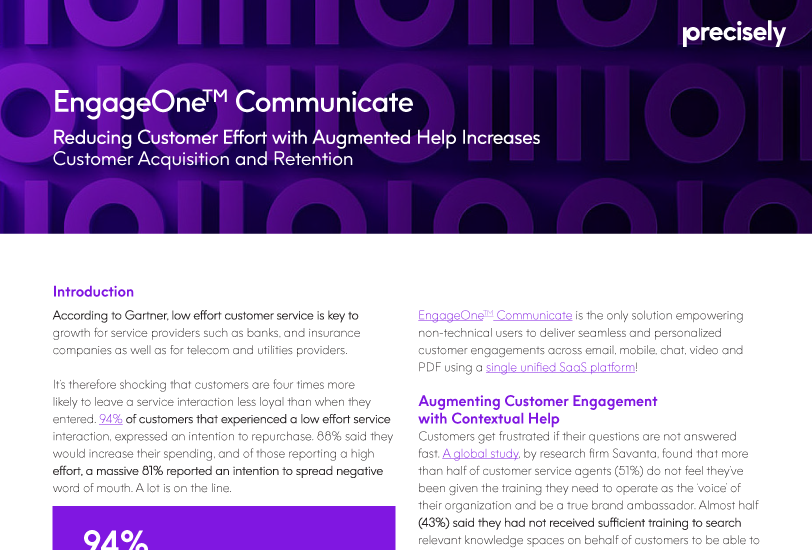White Paper
Reducing Customer Effort with Augmented Help Increases Customer Acquisition and Retention
According to Gartner, low effort customer service is key to growth for service providers such as banks, and insurance companies as well as for telecom and utilities providers.
It’s therefore shocking that customers are four times more likely to leave a service interaction less loyal than when they entered. 94% of customers that experienced a low effort service interaction, expressed an intention to repurchase. 88% said they would increase their spending, and of those reporting a high effort, a massive 81% reported an intention to spread negative word of mouth. Furthermore, 61% said they intend to stop purchasing from these companies entirely! A lot is on the line.
An Amazon-like experience has become most peoples’ expectation and customers now expect similar omnichannel experiences from all their service providers. This has led many businesses to increase the channels on which they engage customers, often implementing new solutions for each new channel. Customers expect interactions across all channels to be consistent. However, it’s challenging to deliver seamless and relevant customer communications throughout each customers’ journey, if you’re using a different solution to support each communication channel!
EngageOne™ Communicate is the only solution empowering non-technical users to deliver seamless and personalized customer engagements across email, mobile, chat, video and PDF using a single unified SaaS platform!
Augmenting Customer Engagement with Contextual Help
Customers get frustrated if their questions are not answered fast. A global study, by research firm Savanta, found that more than half of customer service agents (51%) do not feel they’ve been given the training they need to operate as the ‘voice’ of their organization and be a true brand ambassador. Almost half (43%) said they had not received sufficient training to search relevant knowledge spaces on behalf of customers to be able to find the answers to their questions. Meanwhile, more than one in three (36%) contact center workers report a lack of training is also responsible for the second largest cited customer frustration – contact center staff being unable to provide the best, most empathetic responses.
The difficulty giving customers the right level of service in their moment of need is exacerbated by customer service jobs having one of the largest turnovers of any job category. Furthermore, the great resignation is adding to the challenge.
Read this white paper to learn more about how non-technical users can design, manage, and optimize automated workflows to resolve commonly asked questions throughout a customer’s journey.
